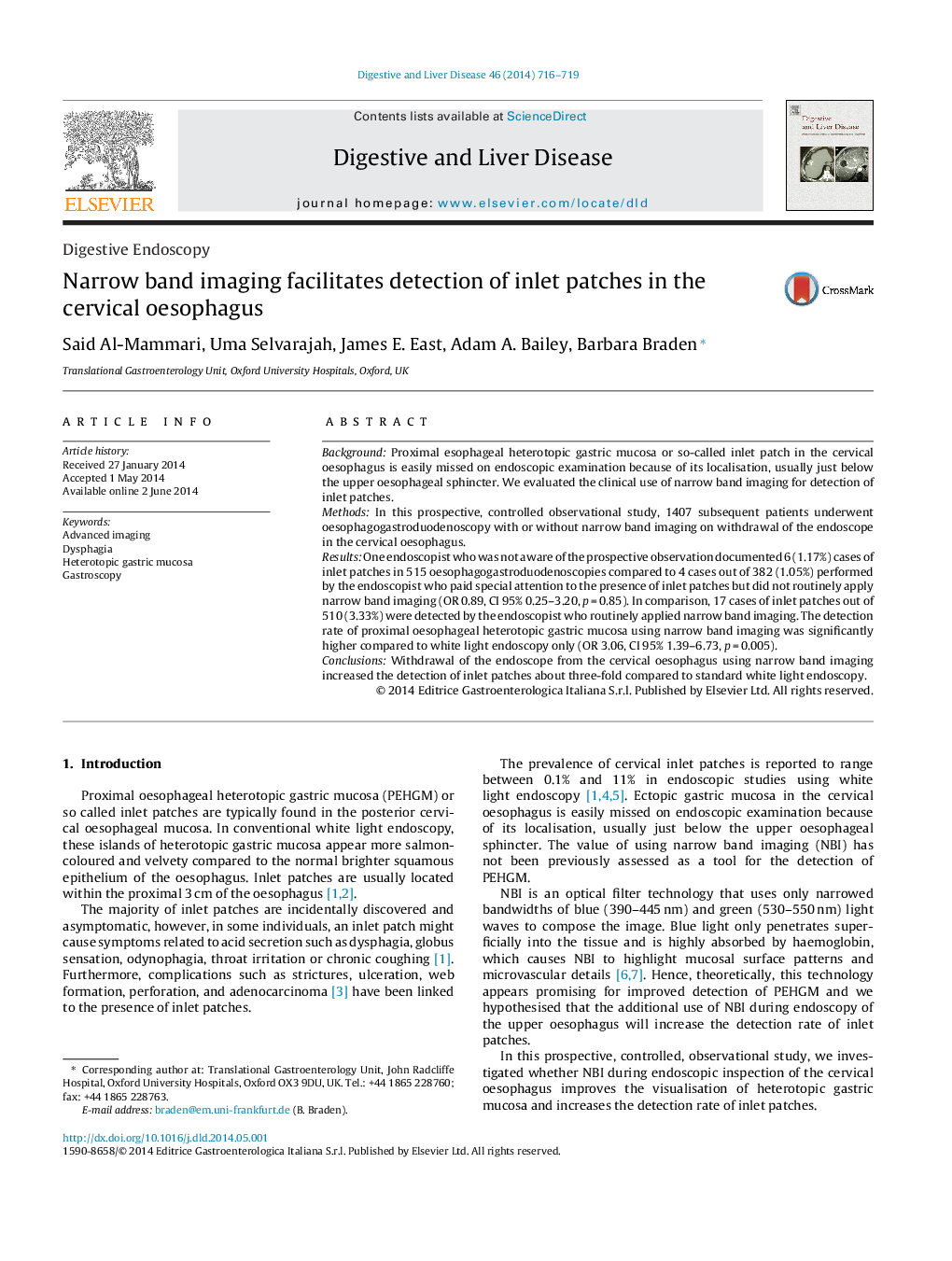| Article ID | Journal | Published Year | Pages | File Type |
|---|---|---|---|---|
| 3262011 | Digestive and Liver Disease | 2014 | 4 Pages |
BackgroundProximal esophageal heterotopic gastric mucosa or so-called inlet patch in the cervical oesophagus is easily missed on endoscopic examination because of its localisation, usually just below the upper oesophageal sphincter. We evaluated the clinical use of narrow band imaging for detection of inlet patches.MethodsIn this prospective, controlled observational study, 1407 subsequent patients underwent oesophagogastroduodenoscopy with or without narrow band imaging on withdrawal of the endoscope in the cervical oesophagus.ResultsOne endoscopist who was not aware of the prospective observation documented 6 (1.17%) cases of inlet patches in 515 oesophagogastroduodenoscopies compared to 4 cases out of 382 (1.05%) performed by the endoscopist who paid special attention to the presence of inlet patches but did not routinely apply narrow band imaging (OR 0.89, CI 95% 0.25–3.20, p = 0.85). In comparison, 17 cases of inlet patches out of 510 (3.33%) were detected by the endoscopist who routinely applied narrow band imaging. The detection rate of proximal oesophageal heterotopic gastric mucosa using narrow band imaging was significantly higher compared to white light endoscopy only (OR 3.06, CI 95% 1.39–6.73, p = 0.005).ConclusionsWithdrawal of the endoscope from the cervical oesophagus using narrow band imaging increased the detection of inlet patches about three-fold compared to standard white light endoscopy.
